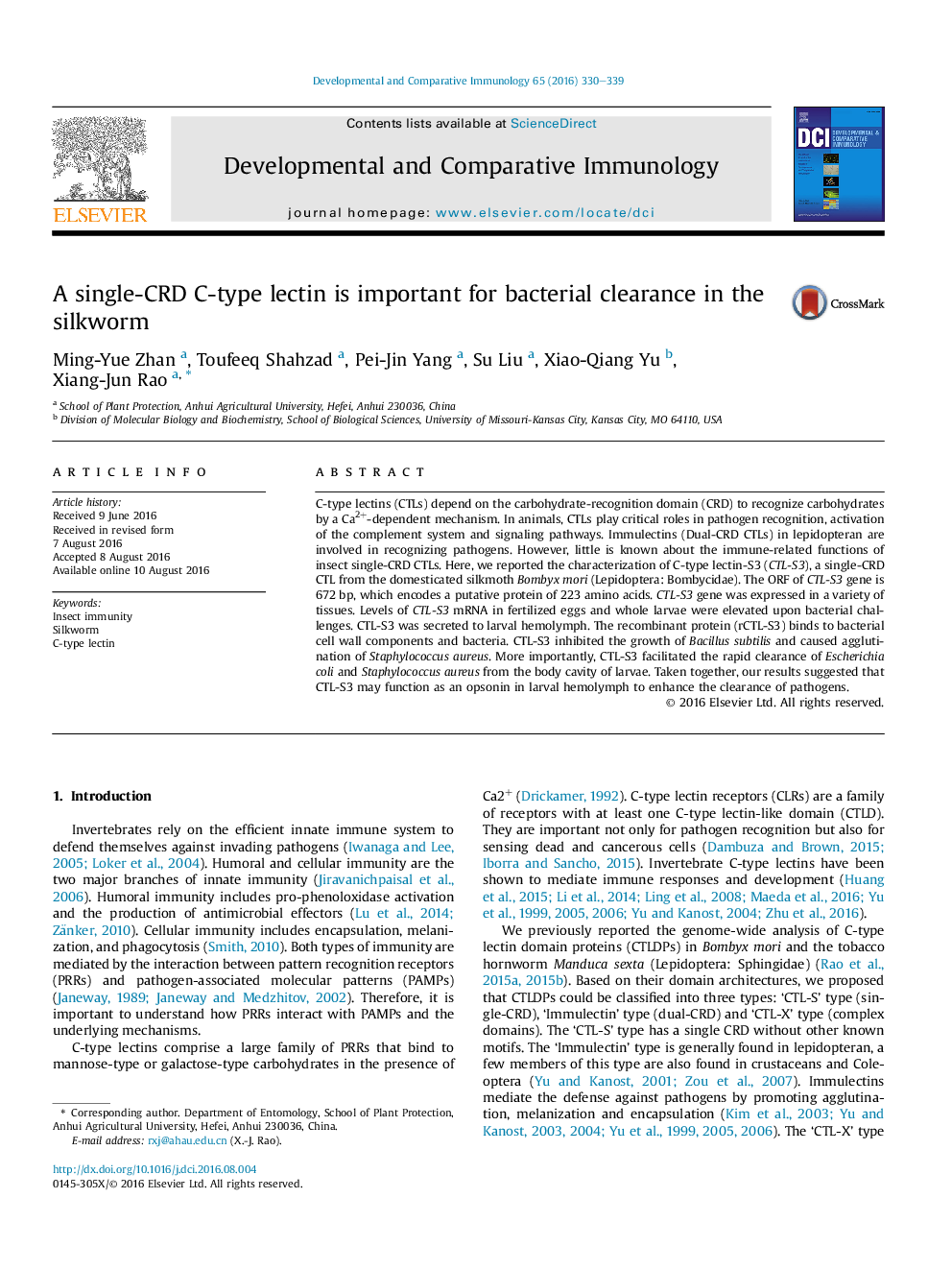| Article ID | Journal | Published Year | Pages | File Type |
|---|---|---|---|---|
| 2428770 | Developmental & Comparative Immunology | 2016 | 10 Pages |
•We identified and characterized a C-type lectin (CTL-S3) in Bombyx mori.•BmCTL-S3 was significantly upregulated in fertilized eggs and whole larvae after bacterial challenges.•BmCTL-S3 could bind to bacteria and bacterial cell wall components.•BmCTL-S3 facilitated the clearance of bacteria from hemolymph.
C-type lectins (CTLs) depend on the carbohydrate-recognition domain (CRD) to recognize carbohydrates by a Ca2+-dependent mechanism. In animals, CTLs play critical roles in pathogen recognition, activation of the complement system and signaling pathways. Immulectins (Dual-CRD CTLs) in lepidopteran are involved in recognizing pathogens. However, little is known about the immune-related functions of insect single-CRD CTLs. Here, we reported the characterization of C-type lectin-S3 (CTL-S3), a single-CRD CTL from the domesticated silkmoth Bombyx mori (Lepidoptera: Bombycidae). The ORF of CTL-S3 gene is 672 bp, which encodes a putative protein of 223 amino acids. CTL-S3 gene was expressed in a variety of tissues. Levels of CTL-S3 mRNA in fertilized eggs and whole larvae were elevated upon bacterial challenges. CTL-S3 was secreted to larval hemolymph. The recombinant protein (rCTL-S3) binds to bacterial cell wall components and bacteria. CTL-S3 inhibited the growth of Bacillus subtilis and caused agglutination of Staphylococcus aureus. More importantly, CTL-S3 facilitated the rapid clearance of Escherichia coli and Staphylococcus aureus from the body cavity of larvae. Taken together, our results suggested that CTL-S3 may function as an opsonin in larval hemolymph to enhance the clearance of pathogens.
